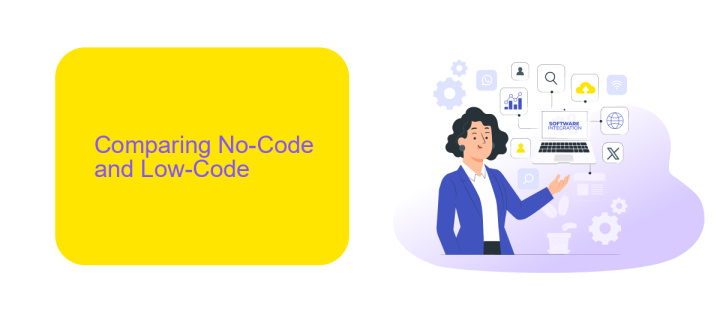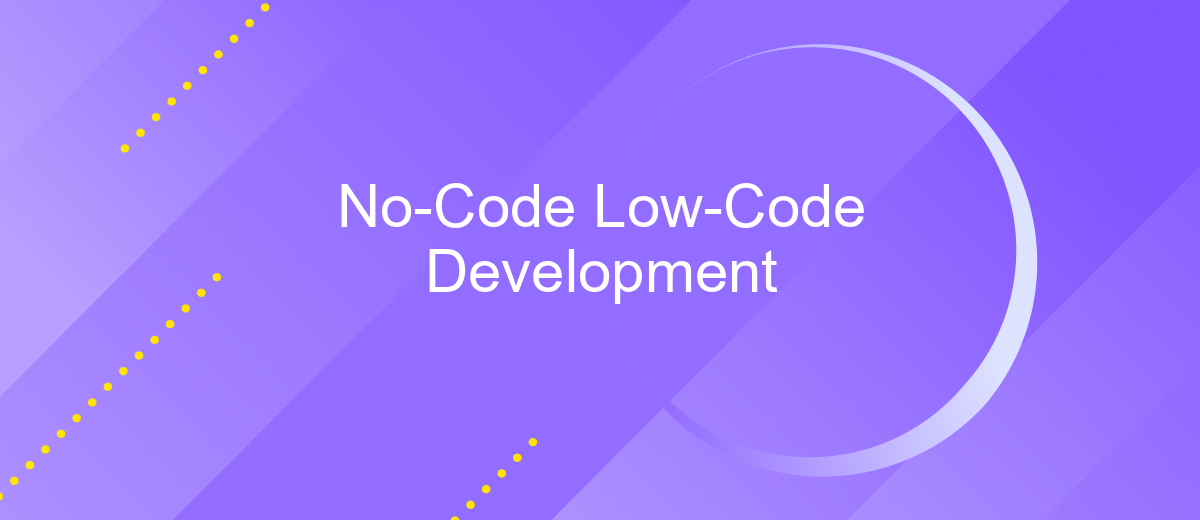No-Code Low-Code Development
No-Code/Low-Code development is revolutionizing the way businesses approach software creation. By enabling individuals with little to no programming experience to build functional applications, these platforms democratize technology and accelerate innovation. This article explores the benefits, challenges, and future prospects of No-Code/Low-Code solutions, shedding light on how they are transforming the digital landscape for enterprises and entrepreneurs alike.
Introduction
No-Code and Low-Code Development platforms are revolutionizing the way businesses approach software creation. These platforms enable users with little to no programming experience to develop applications swiftly and efficiently, reducing the dependency on traditional coding expertise. This democratization of software development is empowering more individuals and organizations to innovate and solve problems through technology.
- Accelerates development processes
- Reduces costs associated with hiring specialized developers
- Enables rapid prototyping and iteration
- Facilitates greater collaboration between technical and non-technical teams
In addition to simplifying app creation, No-Code and Low-Code platforms often offer integrations with various services to enhance functionality. For instance, ApiX-Drive allows seamless integration between different applications, automating workflows and data transfers without requiring extensive coding knowledge. This further extends the capabilities of No-Code and Low-Code solutions, making them even more versatile and powerful for businesses of all sizes.
Comparing No-Code and Low-Code

No-code and low-code development platforms offer distinct advantages depending on the user's needs and technical expertise. No-code platforms are designed for users with little to no programming knowledge, enabling them to build applications through visual interfaces and pre-built templates. These platforms are ideal for small businesses and individual entrepreneurs who need to quickly develop and deploy solutions without the need for extensive coding skills. Examples of no-code tools include website builders and form creators, which allow for rapid prototyping and deployment.
Low-code platforms, on the other hand, cater to users who have some level of programming knowledge but want to expedite the development process. These platforms provide a mix of visual development tools and the ability to write custom code when necessary, making them suitable for more complex applications. Low-code solutions are often used by larger organizations that require scalable and customizable applications. Additionally, services like ApiX-Drive can be integrated into both no-code and low-code platforms, allowing users to automate workflows and connect various applications seamlessly, enhancing the overall functionality and efficiency of the developed solutions.
Benefits and Use Cases

No-Code and Low-Code development platforms offer numerous benefits, making application development more accessible and efficient. These platforms enable users with little to no programming skills to create functional applications, reducing the dependency on professional developers. They also accelerate the development process, allowing for quicker iterations and faster time-to-market. Furthermore, they lower costs associated with hiring specialized development teams and maintaining complex codebases.
- Business Process Automation: Streamline operations by automating repetitive tasks.
- Rapid Prototyping: Quickly develop and test application prototypes.
- Data Management: Create custom dashboards and reporting tools for data analysis.
- Integration Solutions: Seamlessly connect various APIs and services, such as ApiX-Drive, to enhance functionality.
- Customer Relationship Management: Build tailored CRM systems to manage customer interactions and data.
In addition to these use cases, platforms like ApiX-Drive facilitate the integration of various applications and services, further enhancing the capabilities of No-Code and Low-Code solutions. By offering a user-friendly interface for setting up integrations, ApiX-Drive helps businesses automate workflows and improve efficiency without the need for extensive coding knowledge. This democratization of technology empowers organizations to innovate and adapt swiftly in a competitive market.
Challenges and Limitations

No-Code and Low-Code development platforms offer significant advantages, but they come with their own set of challenges and limitations. One of the primary concerns is the lack of customization. While these platforms provide numerous templates and pre-built components, they often fall short when specific, unique features are required.
Another issue is scalability. As projects grow in complexity, the limitations of No-Code and Low-Code tools become more apparent. These platforms may not handle high levels of data processing or complex business logic efficiently.
- Limited customization options
- Scalability issues
- Vendor lock-in
- Security concerns
Additionally, integrating various services can be challenging. While tools like ApiX-Drive can help automate and streamline integrations, they may not cover all use cases or offer the depth of customization that a fully coded solution would. Therefore, while No-Code and Low-Code platforms can accelerate development, they may not be suitable for all types of projects.
Future of No-Code and Low-Code
The future of no-code and low-code development is poised to revolutionize the way software is created and deployed. As these platforms continue to evolve, they promise to make software development more accessible to a broader audience, including those without traditional programming skills. This democratization of technology will enable businesses to innovate faster, reduce development costs, and respond more swiftly to market demands. Moreover, the integration capabilities of no-code and low-code platforms will expand, allowing seamless connections between various software and services, enhancing overall functionality and user experience.
One of the key trends in this space is the increasing use of advanced automation and integration tools like ApiX-Drive. Such services simplify the process of connecting different applications and automating workflows, making it easier for users to manage complex tasks without extensive coding knowledge. As these tools become more sophisticated, they will further empower users to create more robust and scalable solutions, driving significant advancements in various industries. Ultimately, the future of no-code and low-code development holds immense potential for transforming how we approach software creation and digital transformation.
FAQ
What is No-Code/Low-Code development?
Who can benefit from No-Code/Low-Code platforms?
Are No-Code/Low-Code platforms secure?
How do No-Code/Low-Code platforms handle integrations?
Can complex applications be built using No-Code/Low-Code platforms?
Do you want to achieve your goals in business, career and life faster and better? Do it with ApiX-Drive – a tool that will remove a significant part of the routine from workflows and free up additional time to achieve your goals. Test the capabilities of Apix-Drive for free – see for yourself the effectiveness of the tool.

